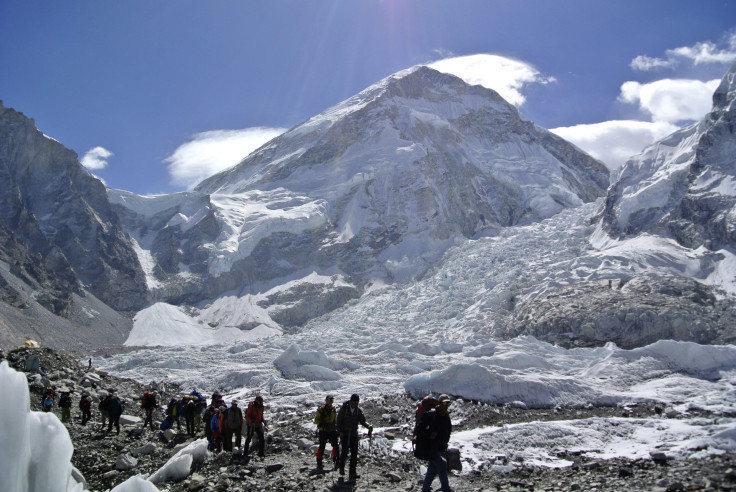‘Icefall Doctors’ repair Mount Everest climbing route to call back climbers

Four months after a devastating earthquake in April, a team of specialised Nepalese Sherpa mountaineers have started resetting the climbing route on Mount Everest. The "Icefall doctors" returned to prepare the route for the first climber to ascend Everest, which they say as likely to be the only mountaineer to climb in the current season.
The Nepalese government and Sherpa community are determined to rebuild the route as soon as possible since most of the people depend on foreign climbers for a livelihood. The Icefall doctors are working to prepare the route between Everest's Base Camp at 5,970 metres, or 17,600 feet, across the notorious Khumbu icefall, to Camp 2 at 6,500 metres, or 21,300 feet, which was affected by a deadly avalanche.
The team has surveyed the climbing route, and aluminum ladders have been placed to serve as bridges to cross deep crevasses. They plan to set ropes through the Khumbu Icefall in the next few days for mountaineers to clip their harnesses into sections.
The Khumbu icefall, a steep portion of a glacier shaped like a frozen waterfall, is a treacherous stretch of a route used to reach the summit of the 8,850-metre (29,029-foot) mountain. Climbers are required to negotiate after they leave the base camp on their way to Camp 1 on the mountain.
The Icefall doctors hope to attract mountaineers back to Everest for the autumn season after the restoration of the climbing route. Officials said a Japanese climbing team was already in Nepal ahead of their planned attempt on the summit in September.
On Tuesday, Aug 25, climber Nobukazu Kuriki begins acclimatising for the Everest region for his planned attempt to climb the mountain in September. Kuriki is so far the only person scheduled to attempt the summit during the “challenging” autumn climbing season.
"I do feel nervous and afraid," he told Reuters. "This is only natural before attempting the challenge of climbing Everest, particularly after the earthquake and at this time of year."
The president of Nepal's Mountaineering Association, Ang Tsering Sherpa, said the Japanese expedition is "risky and dangerous,” after the routes were destroyed by a devastating earthquake and avalanches. Climbing in the autumn also brings the additional risks of cold temperatures and strong winds, he added.
However, Sherpa told CNN that “the snow conditions are very stable and the Icefall doctors are very experienced, they know the conditions very well and they know each step very well. Their main priority is to put the safety and security of mountaineers and themselves first."
Officials still raise cautions on climbing the mountain even after the restoration, as the constantly moving glacier puts the ice under tremendous pressure and even the safest route might break up without warning. The Icefall doctors will stay on the location until the end of the climbing season to monitor and maintain the ropes and ladders.
Contact the writer at feedback@ibtimes.com.au or tell us what you think below





















